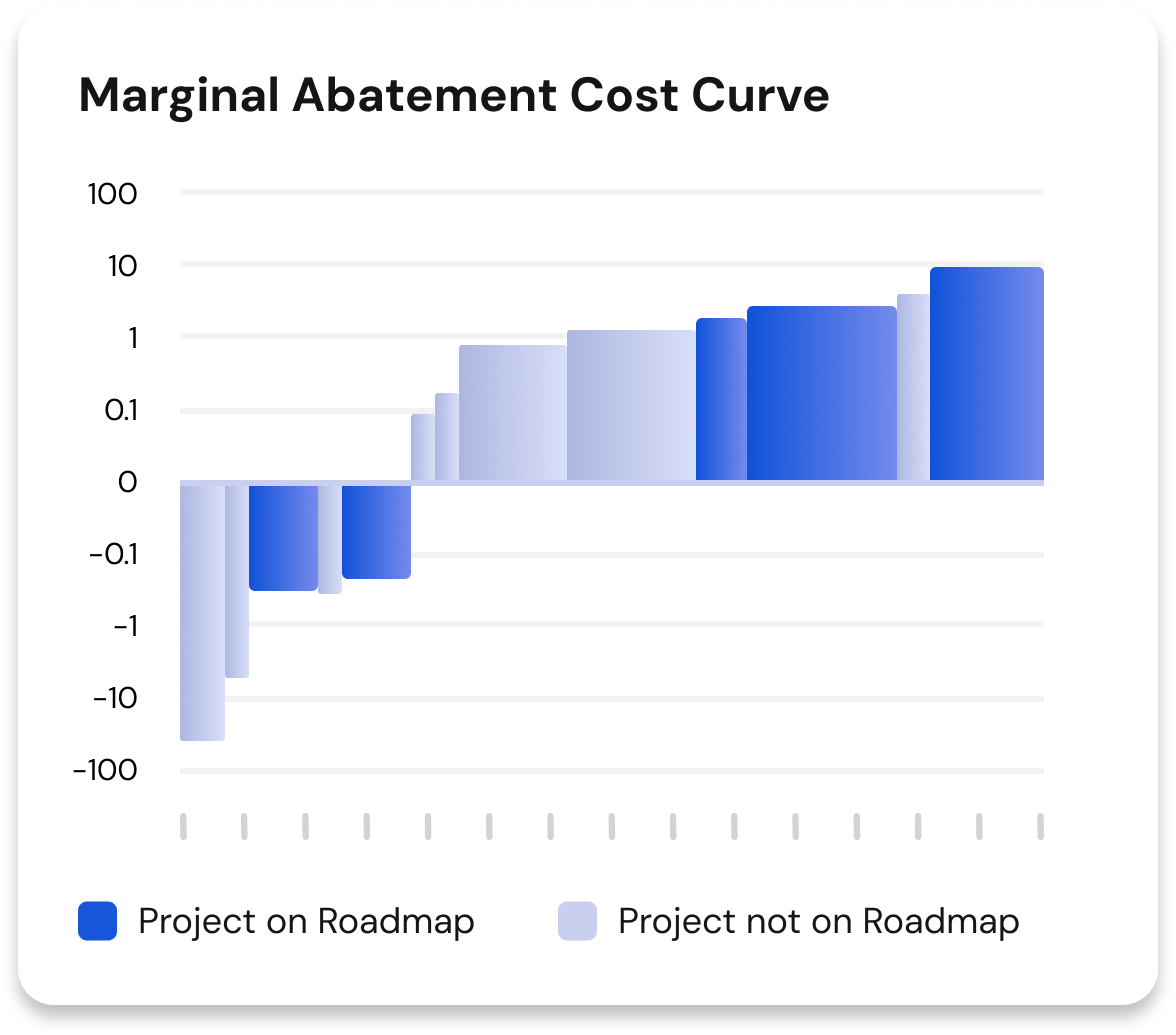Climate Transition Planner
Create a tailored corporate decarbonization plan, model cost-effective reduction projects to achieve your targets, and meet global regulations.
Talk to UsAI-Suggested Initiatives
Don't be limited by prebuilt decarbonization projects - Leverage our AI-driven recommendations tailored to your organization’s top-emitting sources. Our tool provides a head start by recommending sector-based initiatives according to your emissions data, saving time and ensuring impactful strategies.
.png)

.png)

Interactive Marginal Abatement Cost Curve (MACC)
Visualize the cost-effectiveness and potential impact of your reduction projects with our interactive MACC. Compare projects, plan your climate transition, make informed decisions, and optimize your emissions reduction strategy by balancing cost and emissions potential, including corporate reduction target-setting.
Ensure compliance with global carbon regulations while advancing your decarbonization goals.
Talk to UsSimplified Emissions Reductions Modeling
Easily model your businesses decarbonization projects to build transition plans. Focus on top down modeling to ensure streamlined planning and faster implementation of reduction projects.
.png)



Corporate-Level Carbon Reduction Planning
Model carbon reduction projects effortlessly across your organization, broadening corporate planning based on forecast emissions that aligns with strategic goals.
SINAI Supports Global Compliance and Regulations
The SINAI Climate Transition Planner is designed to help your organization comply with key regulatory frameworks, including:








